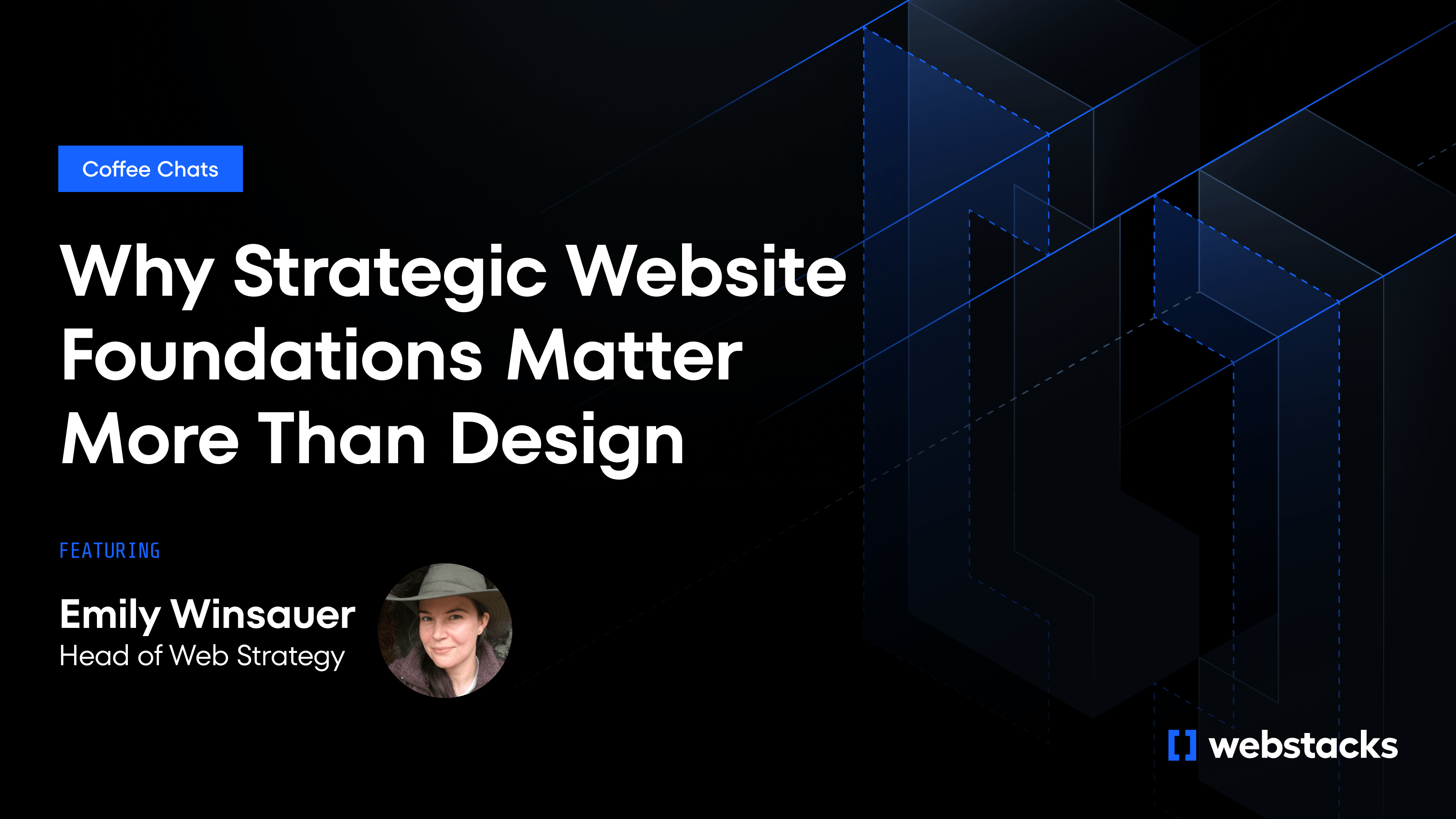You can feel when your SaaS brand is out of sync.
Leads are coming in, but they’re not converting. Your team is spending more time explaining what the product does than actually selling it. Internally, the brand feels like it belongs to a company you used to be, not the one you’ve become.
That’s the rebrand moment.
For many SaaS companies, it doesn’t start with a big realization. It starts with a nagging sense that the story no longer fits. Your product has matured, your customers have changed, and your market has moved, but your brand stayed behind.
A strategic rebrand gives you the chance to fix that. You can build a system that reflects who you are now and where you're headed next.
This guide breaks down how to rebrand with purpose, so your messaging, design, and website look and work better.

1. Know When It’s Time to Rebrand
Most SaaS companies don’t decide to rebrand out of the blue. It usually builds over time.
Maybe users are confused about what your product actually does. Your design might feel a few steps behind what others in your space are doing. Or you may have entered a new market, but your message still speaks to the old one.
Here are a few other factors to look out for:
- Your product has changed, but your messaging still sounds like year one.
- You’re seeing strong traffic, but conversions are slipping.
- Your team is spending too much time explaining what the company does.
- You’ve gone through a merger, acquisition, or big pivot.
- Internally, the brand just doesn’t feel right anymore.
If any of this sounds familiar, it might be time for a rebrand.
A rebrand gives you the chance to rethink how people see your company and to create something that supports your next move.
Calendly is a good example. As the company started focusing more on enterprise buyers, their brand and website needed to reflect that shift. Webstacks helped Calendly update their website and brand to match a new direction. The team made the site easier to manage, introduced a design system, and refined the messaging to better address the needs of enterprise buyers.
The rebrand supported their growth by aligning everything with the company's direction.
2. Define the Strategic Vision Behind the Rebrand
Before you touch design or messaging, take a step back and ask why you’re rebranding in the first place. What’s the goal? What needs to change, and what should stay the same?
A successful rebrand starts with a clear vision. You’re updating the look, but also deciding how your company should be seen, both today and a year from now. That means aligning your team around a few key questions:
- What do we want to be known for?
- Who are we trying to reach now?
- What’s no longer working in how we present ourselves?
Once you know where you’re headed, it becomes much easier to make decisions about tone, messaging, and design. This is also the moment to bring marketing, product, leadership, and sales into the joint conversation. If the strategy is only owned by one team, it’ll fall flat.
3. Rebranding is More Than a Logo
An effective rebrand goes deeper than a new logo, fresh color palette, or cleaner typeface. It reshapes how people perceive your product, how they engage with your message, and how your team represents the company.
If you only change the visuals, but the message and experience stay the same, most users won’t notice the difference. And if they do, they might not care.
Here’s what a full SaaS rebrand usually includes:
- Visual identity: logo, fonts, colors, icons, layouts
- Voice and tone: how your brand speaks across the site, emails, and support
- Messaging: what you say, how you position the product, and what problems you highlight
- Product story: how you explain what you offer and why it matters
- Website experience: not just design, but structure, navigation, and calls to action
All of these elements work together. They tell your story, shape your user’s first impression, and guide the journey through your product.
If you're rebranding, this is the time to get everything in sync. A polished logo won’t do much if the site is hard to use or your messaging doesn’t match what your product delivers.
4. Rebuild the Website to Match the Brand
Your website should reflect the rebrand, not just in how it looks but in how it works and how your team uses it. The site is usually the first place people interact with your brand, and if it doesn’t match the story you’re telling, it creates confusion.
Users notice when things feel off, even if they can’t explain why.
Start by looking at your current setup. Is your CMS flexible enough for your team to update content without waiting on developers? Are you using components that make it easy to build new pages as your product evolves? If not, now’s the time to change that.
A modular site structure makes a big difference. It helps you move faster, stay consistent, and scale without needing to start from scratch every time. Your team should be able to launch a new product page, tweak messaging, or test a new layout without a full sprint.
This is how ServiceTitan approached their site rebuild. Their brand was growing fast, and they needed a site that could grow with it. By moving to a scalable structure, they gave their team more control and built a system that could handle whatever came next.
Rebranding is a great opportunity to update your brand and address what’s been holding you back behind the scenes.

5. Protect SEO and Conversion During the Transition
Rebranding often involves launching a new site, which can be risky in terms of losing search traffic or negatively impacting conversions.
What’s important here is planning. Before you publish anything, map out your current site. Identify which pages bring in the most traffic, which ones rank well, and where conversions happen. These are your high-value pages, and they need special care.
Here’s what to focus on:
- Redirects: Set up 301 redirects from old URLs to new ones so you don’t lose SEO value or send users to dead ends.
- Page titles and metadata: Make sure your new content keeps or improves on what’s working.
- Internal links: Update links across the site so they don’t point to outdated pages.
- Forms and CTAs: Test everything (signup flows, demo requests, email captures) before launch.
Don’t forget about performance. A slow site, especially after a redesign, can hurt both rankings and user experience. Tools like Vercel help you ship fast, lightweight pages that meet Core Web Vitals and give users a smooth experience.
Rebranding needs to make sure your new site performs just as well, if not better, than the one it replaces.
6. Roll Out the New Brand Without Losing Users
The brand’s ready, the site’s done, and the messaging’s set. Now, make sure the rollout doesn’t catch users off guard or leave your team scrambling.
Start by sharing the change with your internal team. Everyone from support to sales should understand what’s changing and why. Give them the tools to talk about the new brand confidently.
Next, plan your external rollout. Consider where your users interact with you, including email, product UI, social media, and help documents. The goal is to update everything at once, or at least in quick sequence, so your brand feels consistent wherever people see it.
A few simple moves go a long way:
- Let customers know ahead of time with a short, clear message.
- Use launch content, such as blog posts, emails, and videos, to guide users through the new features.
- Keep support teams ready in case users have questions or something feels unfamiliar.
- Watch how users respond, and be ready to tweak anything that’s unclear.
The launch doesn’t have to be loud. It just needs to feel thoughtful and connected to the bigger story you’re telling.
7. Make Brand Governance an Ongoing Practice
Once the rebrand is live, it’s important to keep everything aligned.
This is where brand governance helps. When your team knows how to apply the brand across different channels and has the tools to do it, the experience stays consistent without needing constant oversight.
Here’s what helps:
- Create a brand system: Include design tokens, reusable components, voice and tone rules, and examples your team can follow.
- Document everything: From homepage messaging to button styles, having it written down makes it easier to scale.
- Use a flexible CMS: Let marketers update pages and content without going through devs every time.
- Review regularly: Set a cadence for small check-ins so that things don’t drift over time.
This kind of setup keeps things looking good and helps your team move faster, staying confident that the work they’re doing aligns with the brand.
At Webstacks, we help SaaS teams build exactly that. Sites that don’t just launch once, but keep evolving, just like the product they represent.
Rebrand with Growth in Mind
Rebranding has to make sure your brand reflects who you are, what you’ve built, and where you’re going.
For SaaS companies, this means aligning your message with your product, building a website that can scale with you, and providing your team with the tools to keep things moving.
If you’re planning a rebrand and your current site is slowing you down, Webstacks can help. We work with fast-growing SaaS teams to design, build, and scale websites that support growth from day one.
Let’s build something that fits where your company is headed.




